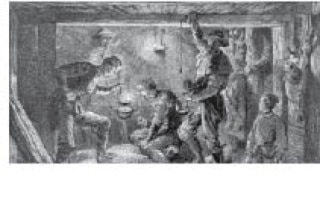Thirty-two miners at the Extension Mine Number Two expected to come home on Oct. 5, 1909.
They never did.
A massive mine explosion took the lives of 32 hard-working miners and sent shockwaves through the small growing community of Ladysmith — bringing tears to the eyes of even the toughest pioneers.
Ed Nicholson, member of the Ladysmith Historical Society, recounts his aunt telling him that his grandfather, Donald, mayor at the time of the explosion, was brought to tears during the mass funeral for the men.
“She had never seen her father cry before,” explained Nicholson.
Each family was fresh sorrow and a different view of the disaster.
It was a devastating time for our town that also served as a bloody, grim and very public, ‘I told you so,’ for the labour movement who were concerned about safety conditions in the mine.
The company was cleared in the investigation. Safety checks were done properly and the mine followed provincial regulation, but 32 men were still dead.
“All of this lent some support to what the American Mine Workers Unions was trying to do which was organize the miners,” said Nicholson.
And while it has never been logged in the history books, some consider the mine explosion to be the main trigger in the 1912-1914 strike.
Nicholson, who writes history in The Chronicle, said looking at the old papers available in the Ladysmith Archives from 1910 and on, it was easy to notice a pattern.
“As a historian, you could see this (strike) coming,” said Nicholson.
However, tension between workers and mine management is as old as Ladysmith itself, which was started after a rail, land and labour dispute with several parties prompted town founder and mine owner James Dunsmuir to ship his coal away from Nanaimo and towards a parcel of land he had purchased in 1896.
The parcel of land would become Ladysmith and miners would be left with a choice — move to Ladysmith, or risk losing your job.
Many miners who had already settled near Extension were forced to keep up the charade of getting on the train to Ladysmith and finding other ways to get back to their homes.
Labour disputes had a long history on Vancouver Island and by the end of the strike, every mine on the Island was drawn into the strife.
In 1903, the Miners and Mine Labourers Protective Association based in Nanaimo became affiliated with the Western Federation of Miners and the American Labour Union, according to Richard Goodacre in his book Ladysmith Heritage Inventory.
Goodacre writes a battle with CPR prompted the American Labour Union to try and cut off coal the railway, to which local mines were a big supplier.
Union meetings with Ladysmith workers enraged Dunsmuir who fired the men involved in the meeting and forming the local union and closed the mines at Wellington and Extension.
The 1903 strike lasted from March to July and managed to cripple the local economy.
Dunsmuir was not pleased and the miners went back to work in worse conditions than when they started.
When the 1903 strike failed to gain any recognition for the union, the Western Federation of Miners all disappeared from the Vancouver Island coal industry.
According to Goodacre, in 1910, workers from Nanaimo approached the United Mine Workers of America looking to affiliate.
In 1911, they were affiliated through local #28.
Then, in June 1912, a sanctioned committee found gas at five locations in the Number 2 mine.
While it was confirmed by the government in small doses, the two men in the committee, Isaac Portrey and Oscar Mottishaw found themselves without a place in the mine.
Mottishaw went to work as a contractor in Cumberland. Canadian Collieries (Dunsmuir) soon informed the contractor Mottishaw had to go.
After they were refused a chance to talk with management, the UMWA called their own gathering. On September 15, 1912, the UMWA decided to hold a ‘holiday,’ wrote Goodacre, which was basically a day-long strike.
A note was posted on the mine on September 17 telling the men to remove their tools from the mine.
News of the Cumberland dispute led Ladysmith workers to hold a sympathy ‘holiday.’
And so started the two-year strike.
While so much history is written in books we understand there are a lot of family stories still out there.
In writing about the strike of 1912-1914, The Chronicle has relied heavily on family accounts from the Historical Society, old files and books on local history, including the one mentioned by Richard Goodacre.
If you have a family story from the strike passed down from generations, please write us and let us know, so we can help ensure they become a part of Ladysmith’s written history.
Call the editor at 250-245-2277 or e-mail editor@ladysmithchronicle.com.
To learn more about local history, please visit the Ladysmith Archives behind Tim Hortons or call 250-245-0100.
Pick up next week’s Chronicle to learn how the strike affected Ladysmith.
